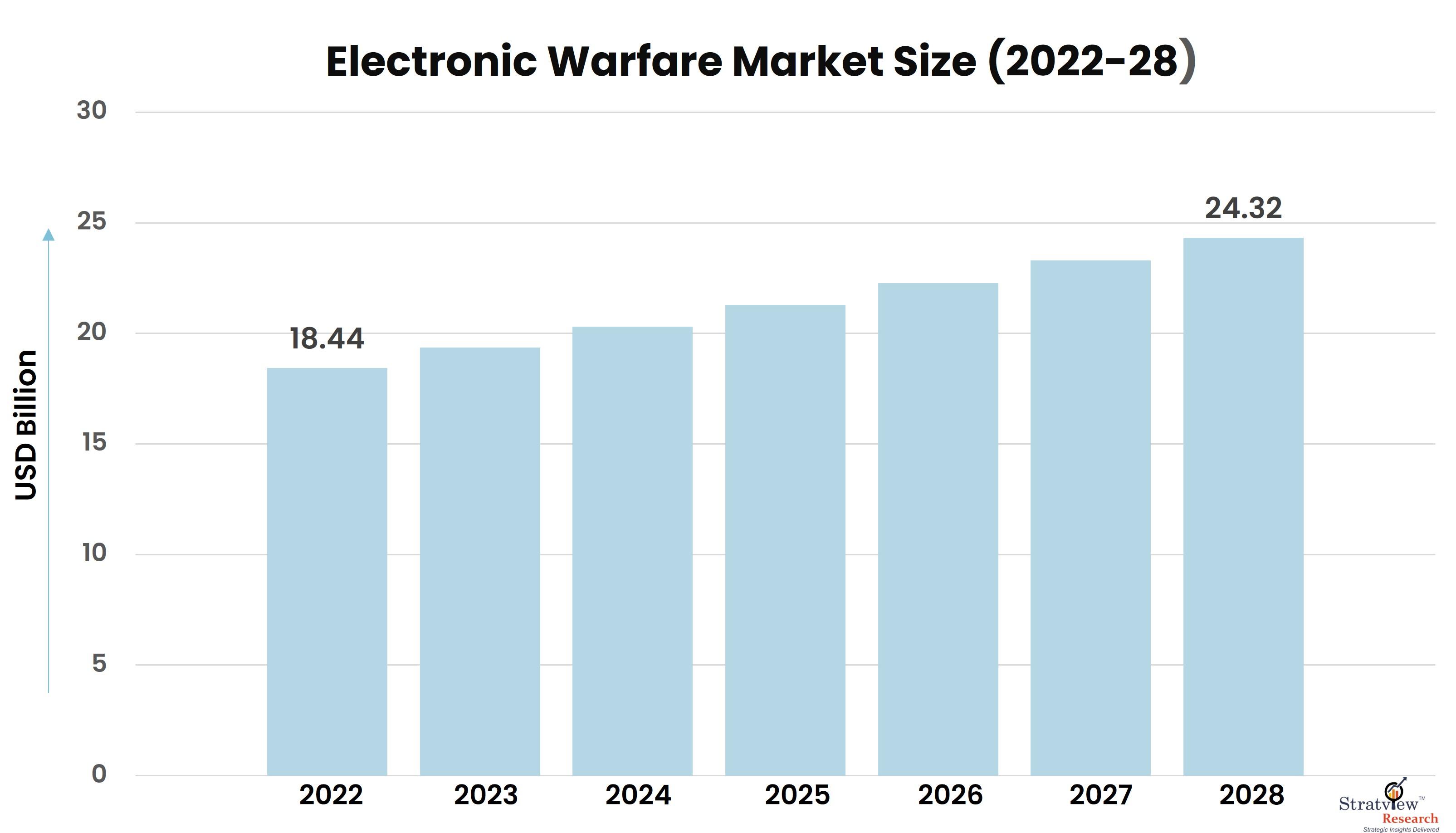Challenges and Opportunities in the Electronic Warfare Market

The electronic warfare market faces a dynamic landscape shaped by rapid technological advancements, evolving threats, and increasing demand for sophisticated defense capabilities. This article explores the significant challenges and opportunities that characterize the current state and future prospects of the EW market.
According to Stratview Research, the electronic warfare market was estimated at USD 18.44 billion in 2022 and is likely to grow at a CAGR of 4.66% during 2023-2028 to reach USD 24.32 billion in 2028.
Challenges:
- Technological Complexity: As electronic warfare technologies become more advanced, they also become more complex. Integrating diverse capabilities such as radar systems, electronic support measures (ESM), electronic attack (EA) systems, and cyber-electronic warfare requires robust interoperability and compatibility, posing challenges in system integration and lifecycle management.
- Cyber Threats: The convergence of cyber warfare with electronic warfare introduces new vulnerabilities. Adversaries can exploit weaknesses in networked electronic warfare systems, compromising command and control functions or disrupting critical communications. Mitigating cyber threats while maintaining operational effectiveness is a pressing challenge for defense forces.
- Spectrum Congestion: The electromagnetic spectrum is increasingly congested with civilian and military applications, leading to challenges in spectrum management. Ensuring spectrum access for electronic warfare operations amidst competing civilian demands requires effective coordination and allocation strategies.
- Adaptive Adversaries: Potential adversaries are continuously evolving their electronic warfare tactics and technologies. They employ agile and adaptive strategies to counter electronic warfare measures, such as frequency hopping, signal encryption, and anti-jamming techniques. This necessitates ongoing innovation and agility in electronic warfare capabilities to maintain superiority.
Opportunities:
- Technological Innovation: The rapid pace of technological innovation presents significant opportunities for the electronic warfare market. Advancements in AI, machine learning (ML), and autonomous systems enhance electronic warfare capabilities by improving situational awareness, predictive analytics, and response times. These technologies enable more effective electronic warfare operations across diverse operational environments.
- Global Defense Modernization: Increasing defense budgets and modernization initiatives worldwide drive demand for advanced electronic warfare systems. Nations are investing in next-generation electronic warfare platforms to enhance their defense capabilities against emerging threats, creating growth opportunities for electronic warfare solution providers.
- Interoperability and Collaboration: Enhanced interoperability among allied forces and collaboration between defense contractors and technology providers foster innovation and capability development in the electronic warfare market. Joint multinational exercises and interoperable electronic warfare systems strengthen collective defense and interoperability.
- Cyber electronic warfare Integration: Integrating cyber capabilities with traditional electronic warfare systems presents new growth avenues. Cyber electronic warfare convergence enhances operational synergy, improves threat detection and response capabilities, and strengthens overall defense resilience against hybrid threats.
Conclusion:
The electronic warfare market faces multifaceted challenges driven by technological complexity, cyber threats, spectrum congestion, and adaptive adversaries. However, these challenges also present opportunities for technological innovation, global defense modernization, enhanced interoperability, and cyber electronic warfare integration. By addressing these challenges and leveraging opportunities, stakeholders in the electronic warfare market can navigate a path toward advancing capabilities, maintaining operational superiority, and meeting evolving defense requirements in a rapidly changing global security environment.
- Questions and Answers
- Opinion
- Story/Motivational/Inspiring
- Technology
- Art
- Causes
- Crafts
- Dance
- Drinks
- Film/Movie
- Fitness
- Food
- Games
- Gardening
- Health
- Home
- Literature
- Music
- Networking
- Other
- Party
- Religion
- Shopping
- Sports
- Theater
- Wellness
- News
- Culture
- War machines and policy

